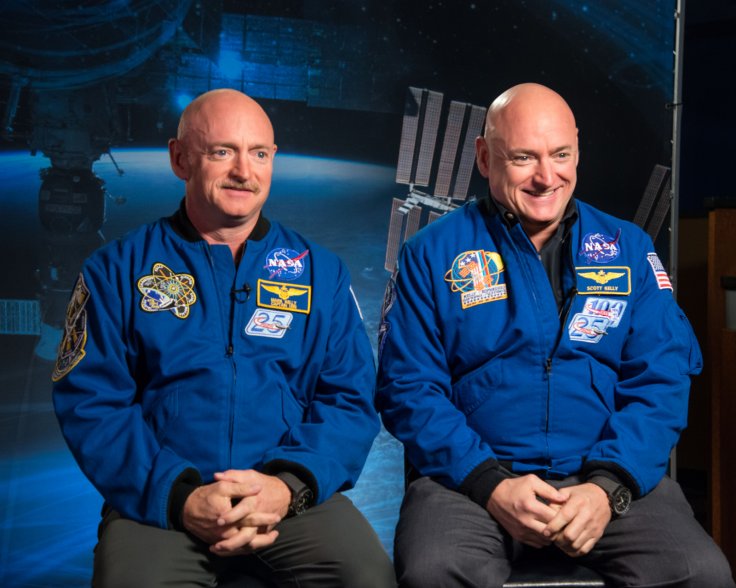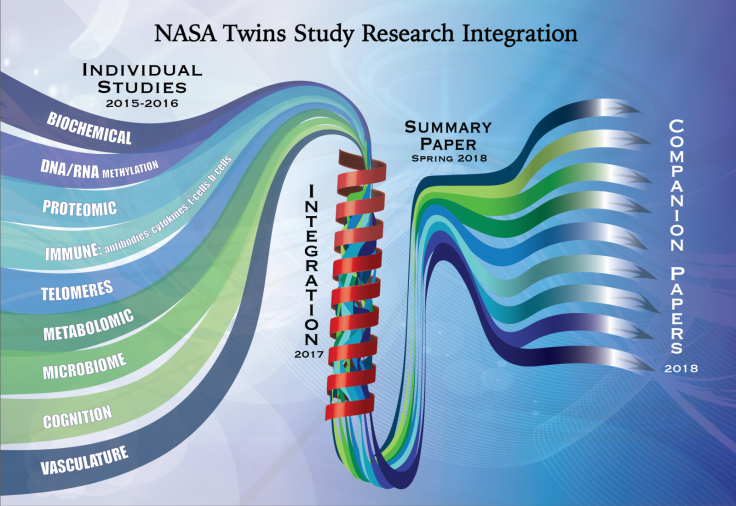
A research team presented their preliminary findings of NASA's "Twins Study," at Human Research Program (HRP) 2017 Investigators' Workshop (IWS). Now the researchers have confirmed that Astronaut Scott Kelly's DNA was changed in space by a year.
Researchers found that when the astronaut landed on the earth, seven percent of his genes did not become normal, while 93 percent returned to normal.
The study focused on 54-year-old Scott Kelly and his twin brother, Mark Kelly, who was also an astronaut, to understand the changes in the human body after spending one year in space.
While Scott spends one year at the International Space Station from March 2015 to March 2016, which was his final mission, on the same time Mark stayed back on earth.
In March 2017, NASA astronaut Peggy Whitson made the record for most spacewalks by a female and then she surpassed the 60-year-old Jeff Williams' record of 534 days, 2 hours and 48 minutes in space. On the other hand, the retired American astronaut Scott spent 520 days in space during his entire career.
Now astronauts have to spend only six months in space stations, which is considered as a standard timeline to be outer space. But the Mars mission would take three years approximately.
A group of 10 researchers presented their early findings after studying Scott in space psychologically and physiologically and compared the results with his brother Mark. As part of the study, they also looked at some proteins and also evaluated both the bother's cognition.
Earlier, the study's principal investigator Christopher Mason said, "Some of the most exciting things that we've seen from looking at gene expression in space is that we really see an explosion, like fireworks taking off, as soon as the human body gets into space."
"With this study, we've seen thousands and thousands of genes change how they are turned on and turned off. This happens as soon as an astronaut gets into space, and some of the activity persists temporarily upon return to Earth," he further added.
"This study represents one of the most comprehensive views of human biology. It really sets the bedrock for understanding molecular risks for space travel as well as ways to potentially protect and fix those genetic changes," Mason concluded.

But now the researchers have confirmed that the DNA has altered during the one year of a space mission. In the study, they presented what happened to Scott after he returned to Earth.
Later in 2018 an integrated summary, the combined version of individual studies on the twins, is expected to be released.
The researchers measured large numbers of metabolites, proteins and cytokines and they came to know that spaceflight is associated with oxygen deprivation stress, dramatic nutrient shifts and increased inflammation which caused the change in DNA.
NASA reported that this study will help the organization to understand the changes in the human body during the space mission, as it "continues to prioritize the health and safety of astronauts on spaceflight missions."
Born in West Orange, New Jersey on February 21, 1964, Scott is the second of twin brothers to be born. After finishing high school, Scott received a bachelor of science degree in electrical engineering from the State University of New York Maritime College in 1987 and a master's degree in aviation systems from the University of Tennessee, Knoxville, in 1996. He aspired to become a doctor but later he eventually went on to follow his passion for flying planes and joined Navy.
However, the HRP is dedicated to finding out different methods and technologies to make sure the space travel is safe for humans. It also helps to reduce the risks to astronaut health and performance by ground research facilities and enables space exploration programs.









